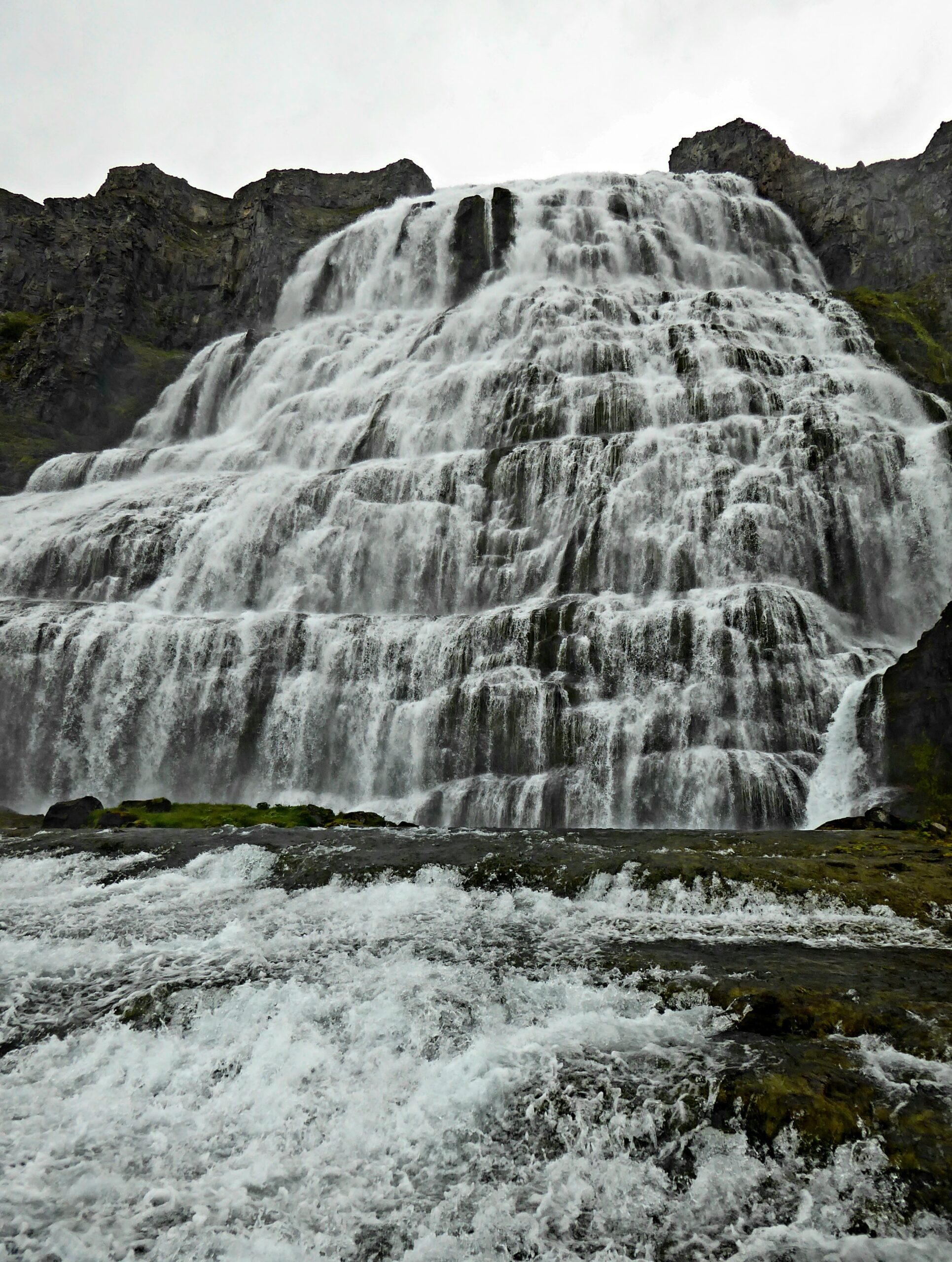
August 4 to September 9, 2020
Iceland’s extreme northwest stretches to the Hornstrandir Nature Reserve, one of Europe’s last wildernesses.
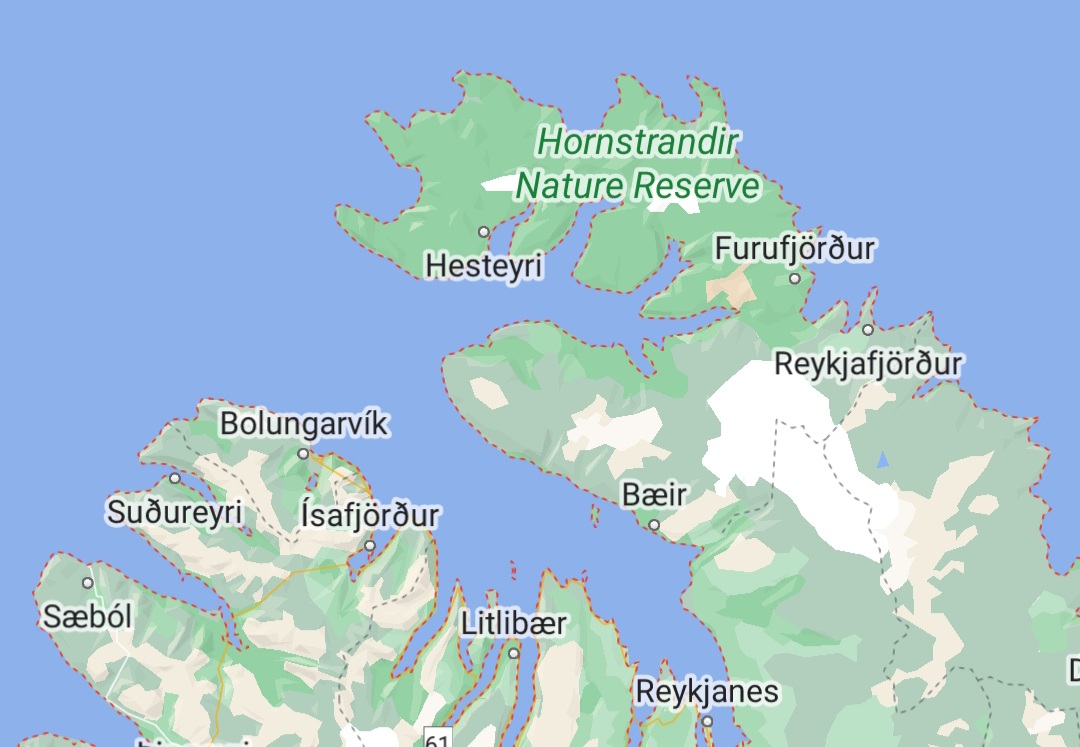
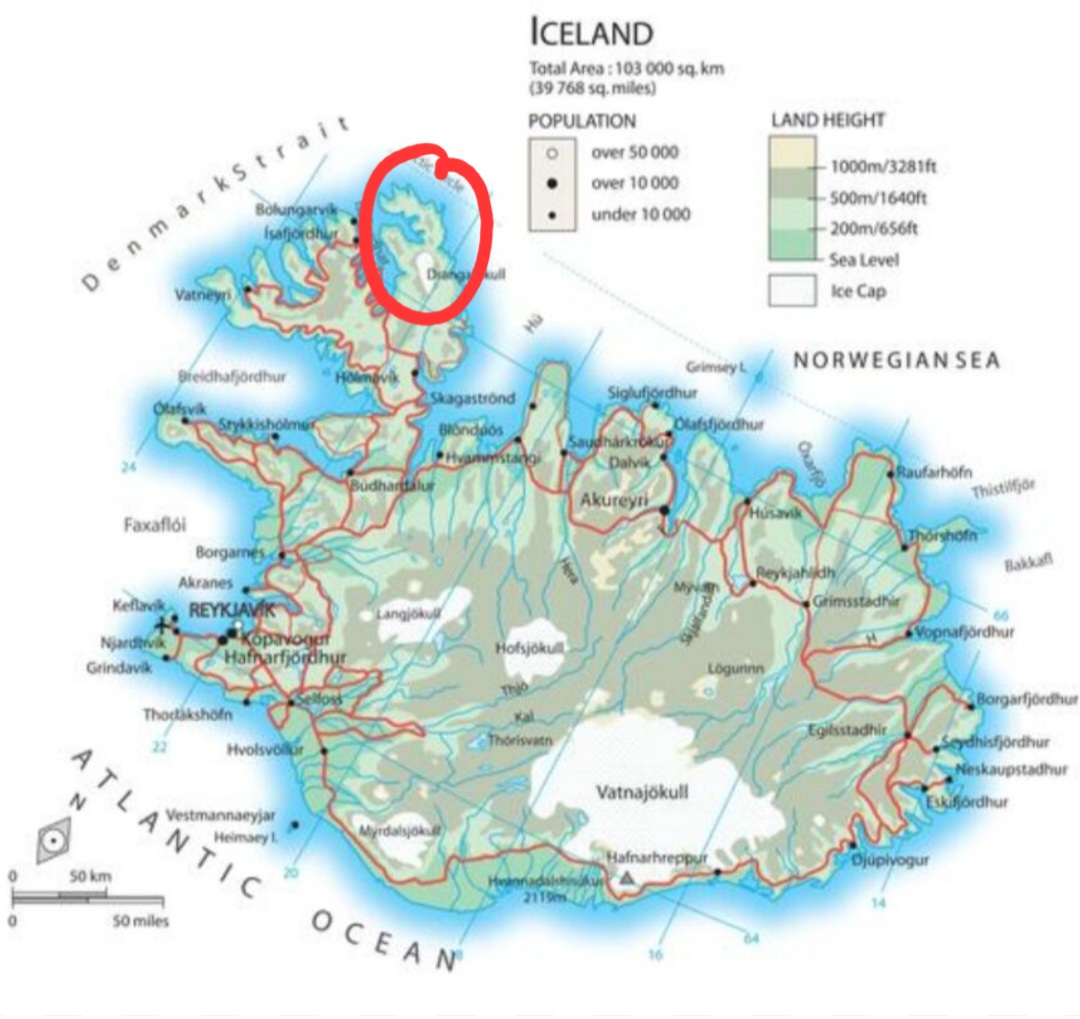
Although it is a part of the mainland, there are no roads to get there. The ferry season is short. Visitors are only allowed in summer. Most go there for multi-day, self-sufficient hikes and bare-bones camping, getting dropped in one port and picked up in another. (The difficulty of the terrain and weather are stressed for anyone considering the adventure.) The others, likely descendants of the year-round residents who left in the early 1950’s, vacation in the homes that remain scattered throughout the reserve. There are no shops.
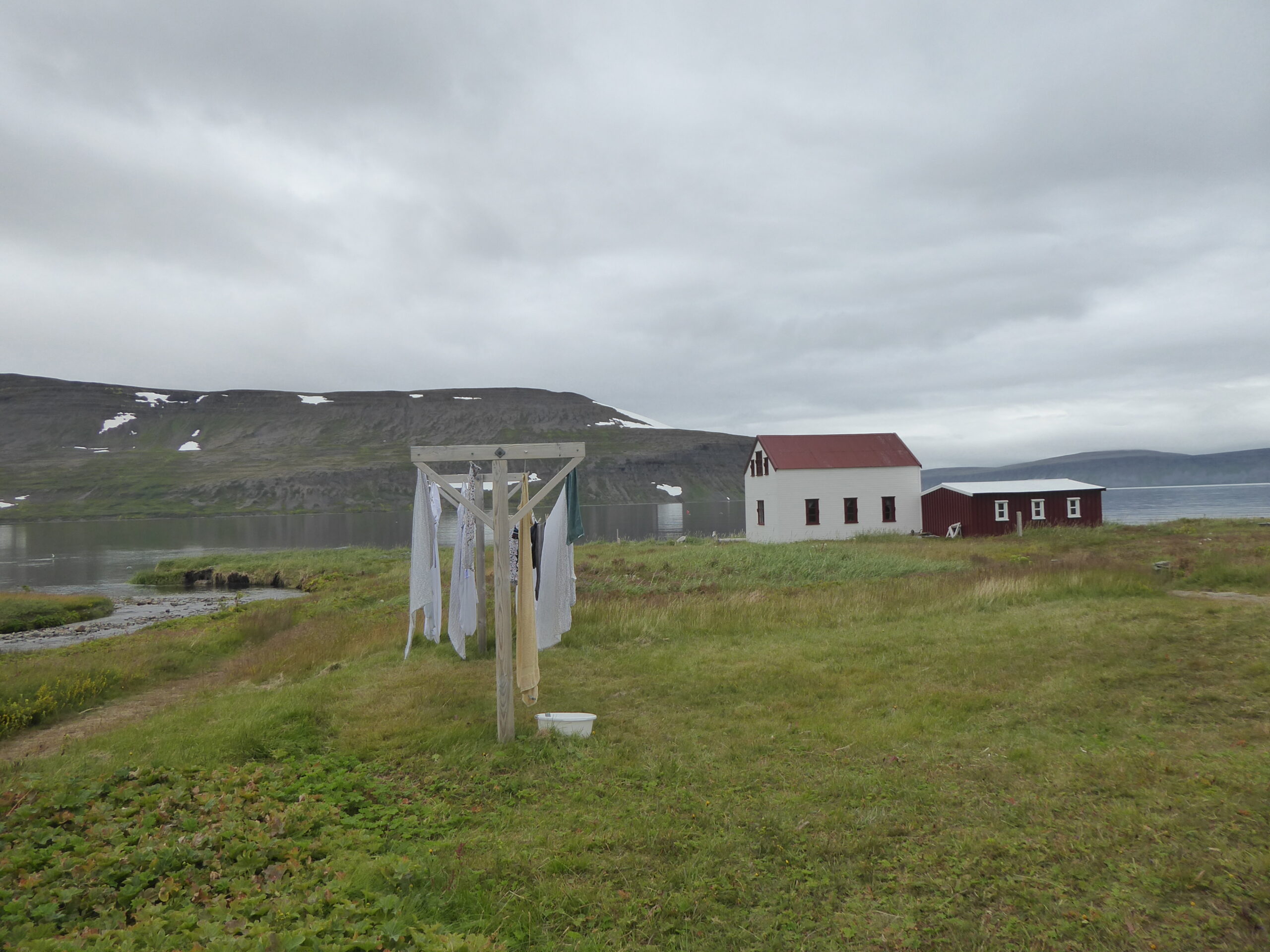
Fortunately, the “Old Doctor’s House” a short walk from the port in the tiny village of Hesteyri, offered a third option. The downstairs was a café and upstairs, in shared rooms, were simple accommodations of beds with linens. I called ahead, was assured there would be a bed available, and left from Isafjordur on a small, sturdy boat with a handful of travelers—most equipped with large backpacks and hiking poles—and a few dogs. The rugged crew of two looked like father and son. The skies were cloudy. There was little wind. The passage was smooth. Those of us disembarking at Hesteyri were guided onto a zodiac for the short trip to the shore.
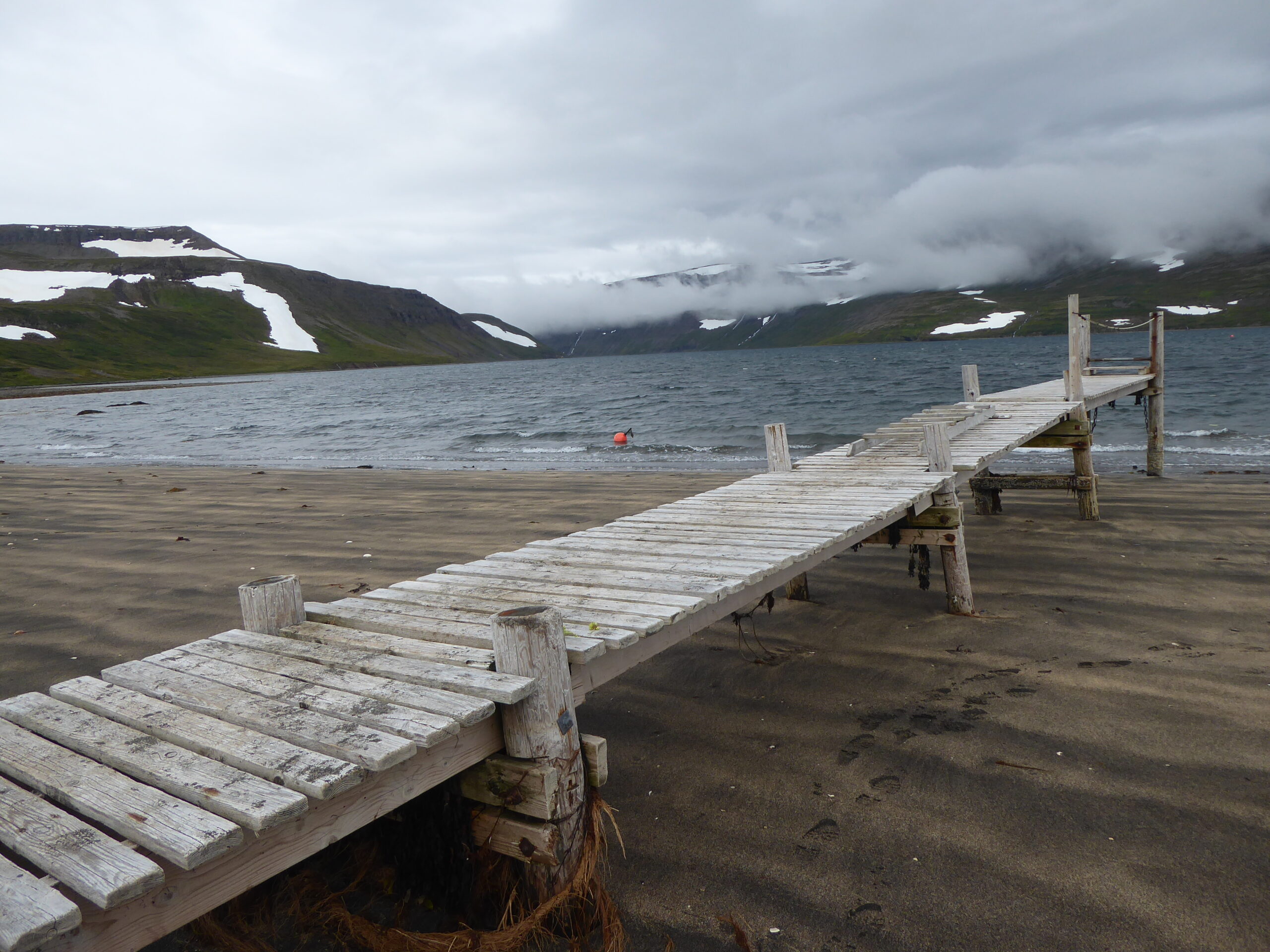
Tables were limited in the café and sharing was encouraged. The owner and young international staff were welcoming. I sat with a young German couple and their impressive assortment of cameras and telephoto lens. They were here solely to photograph artic foxes, the only land mammal native to Iceland, and had thus far been unlucky. After some delicious crepes, locally called pancakes, I set off for a hike.
Trails were not marked, except for some cleared paths, and getting lost would be ill-advised. I stayed in sight of the coast and within a few hours I saw an artic fox carrying his next meal.
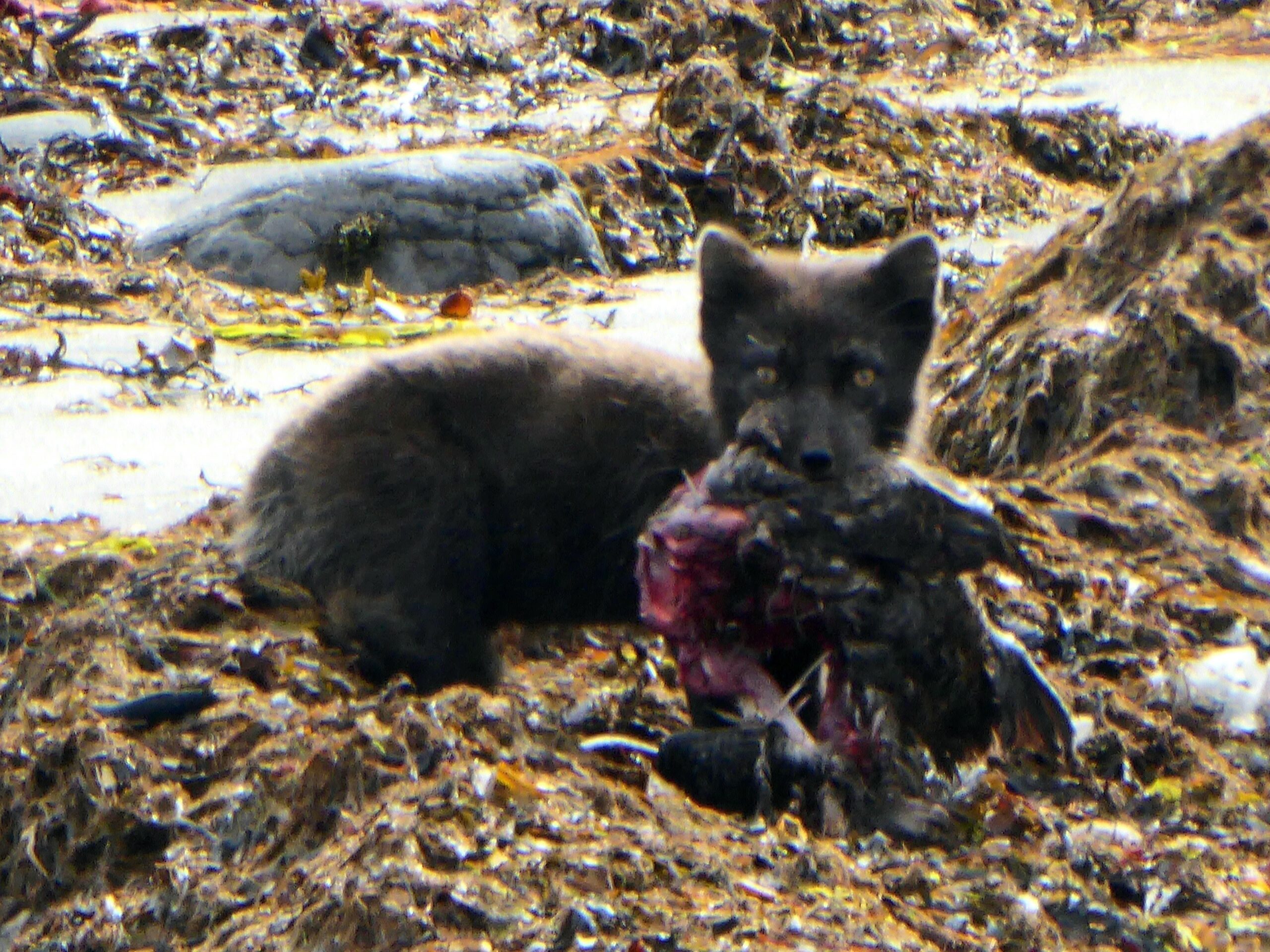
Each day revealed something new.
Seals peeked their heads above the surface before diving again. A grouse, whose feathers blended perfectly with its surroundings, was nearly imperceptible. Seabirds flew overhead while a falcon perched motionless atop a rock. The views of the sea and distant hills were splendid. Looking at the terrain revealed a subtle beauty.
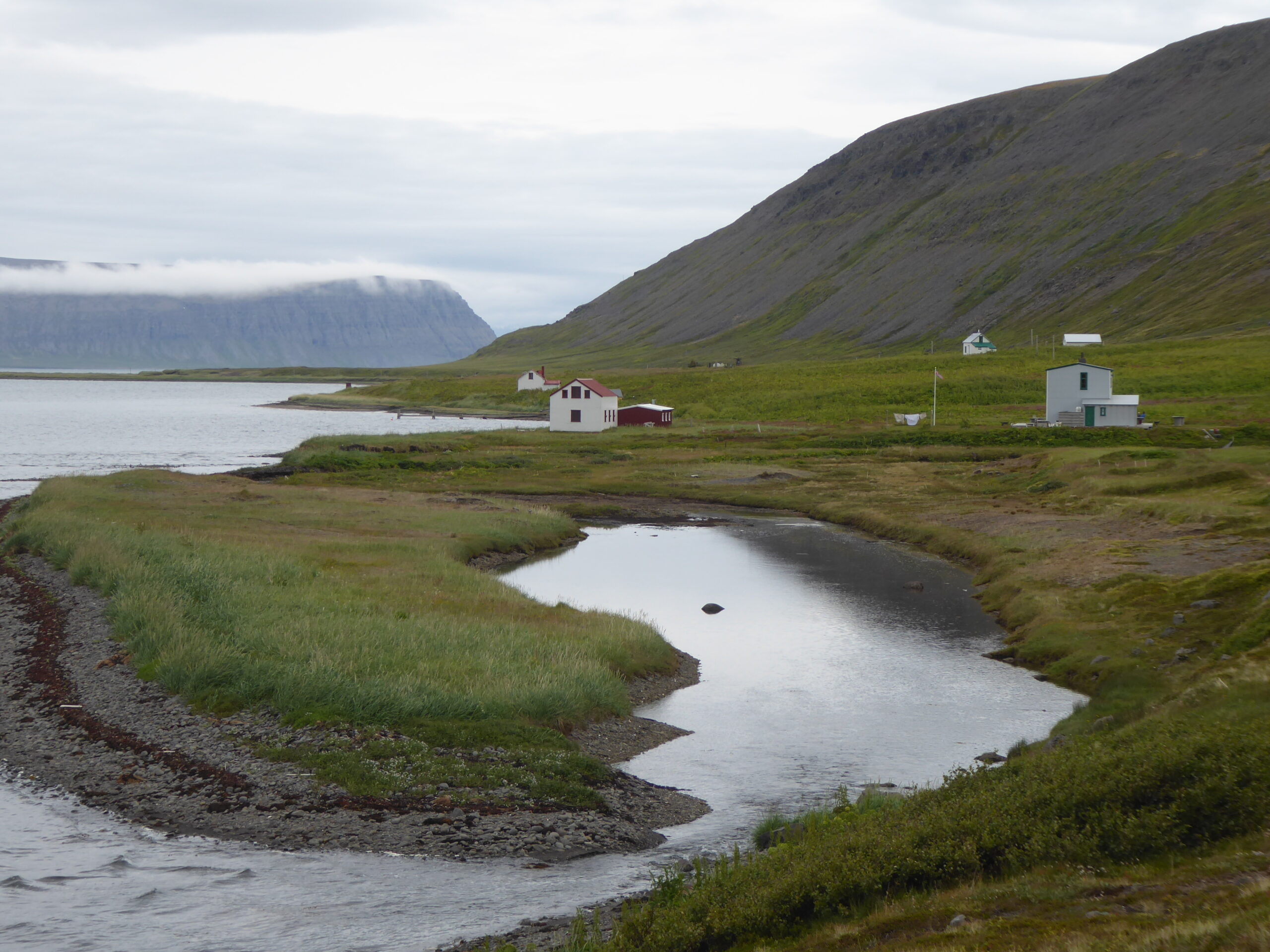 Wildflowers of pink, purple, white, and yellow intermingled with the land’s hues of brown and green. Large brown mushrooms stood tall amid the low grass. I saw no trees, but passed waterfalls and stepped over streams that flowed toward the sea. Although the weather was well above freezing a small mountain of snow remained.
Wildflowers of pink, purple, white, and yellow intermingled with the land’s hues of brown and green. Large brown mushrooms stood tall amid the low grass. I saw no trees, but passed waterfalls and stepped over streams that flowed toward the sea. Although the weather was well above freezing a small mountain of snow remained.
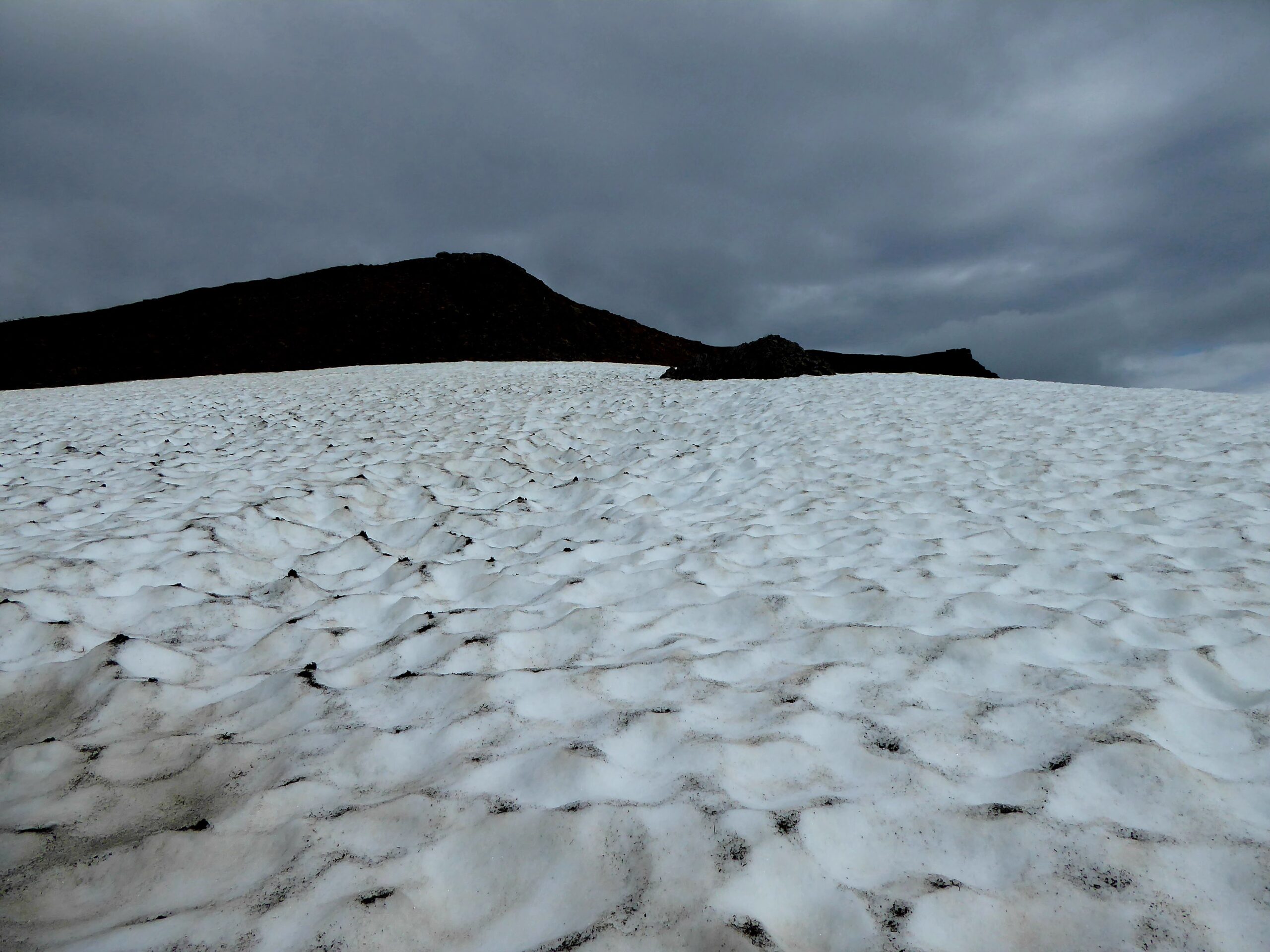
Exploring the coast led me to the remains of a herring factory, originally a Norwegian whaling station built in the 19th c.
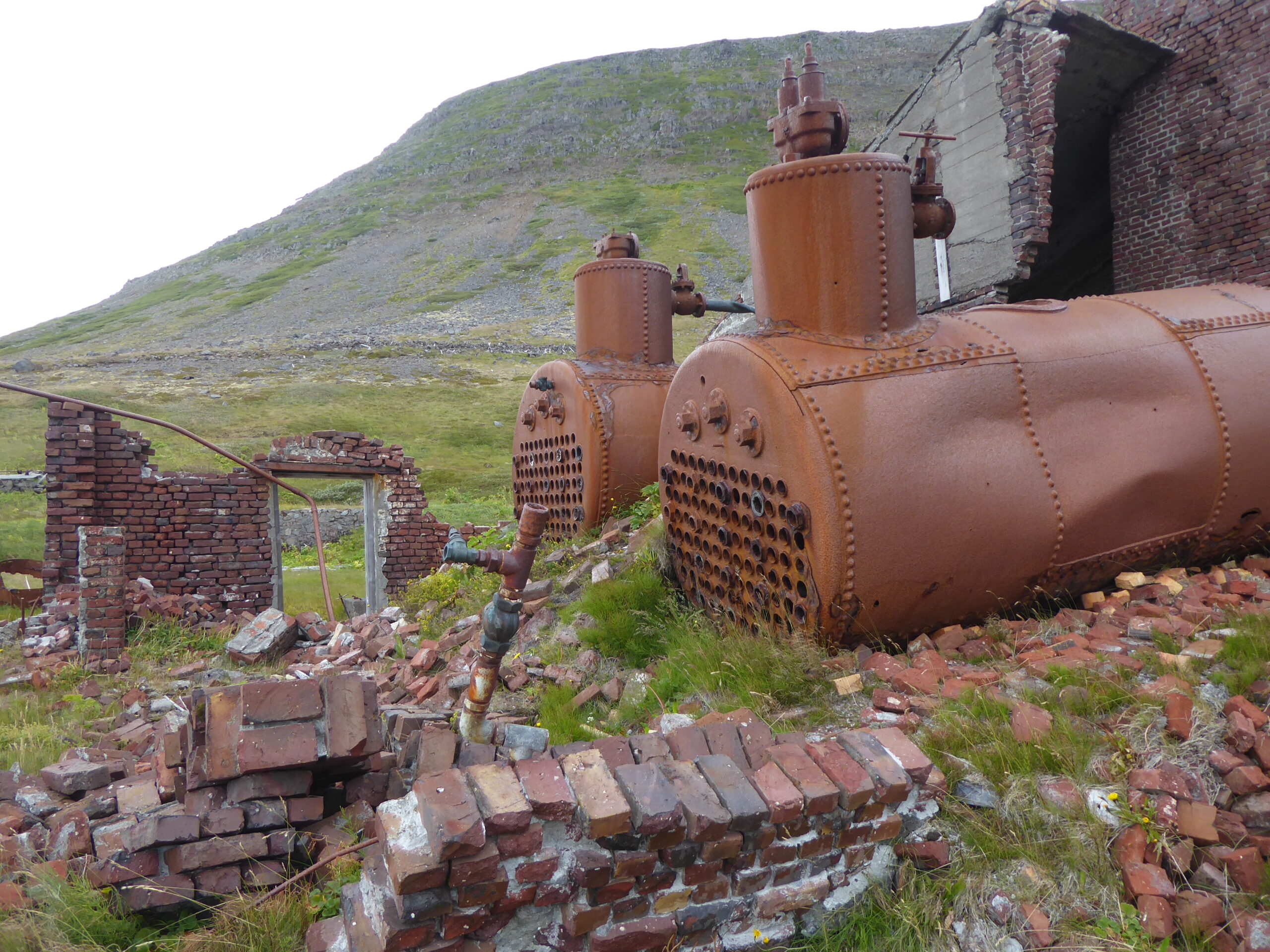
In the evenings travelers gathered in the café for hearty meals and conversation. Bedtime came early, but not before the owner/manager gave an impromptu concert on his accordion.
A storm was forecast with heavy rains and high winds. Hiking would be unpleasant at best. I was scheduled to leave before it hit the following day.
The boat was again unable to moor so the zodiac, skillfully navigated by the young boatman, came to pick us up at the pier. He guided five of us and a dog with his confident grip onto the bobbing vessel.
The storm was moving quickly and the sea became increasingly rough. I’d looked forward to a pleasant and quick return passage to Isafjordur. I hadn’t realized we’d need to be making several stops to pick up hikers at ports along the way.
The rain was coming down in sheets and drenched hikers came aboard with palpable relief. But once we left the tiny ports the boat bucked with the waves and the color from people’s faces drained. The chatting that had, with effort, risen above the sounds of wind and sea ceased. The boatman knew his cue and handed out cleverly designed plastic cups with bags attached—none were refused. It didn’t help that the thick curtain designed to keep us dry and warm was also cutting off a fresh flow of air. I did my best to focus on the storm: the beauty of the rain, wind, and sea—as best I could. The dog stoically kept low to the floor.
What seemed like an interminable voyage ended. We entered the tame waters of Isafjordur harbor. The pale, depleted look of the other passengers—I suspect no different from my own— was nonetheless comical. I suppressed a laugh–perhaps as much out of amusement as relief. The dog seemed to fair best and walked off the boat with aplomb. But despite the unsolicited adventure, I disembarked with wonderful memories of the Hornstrandir Nature Reserve I still cherish.
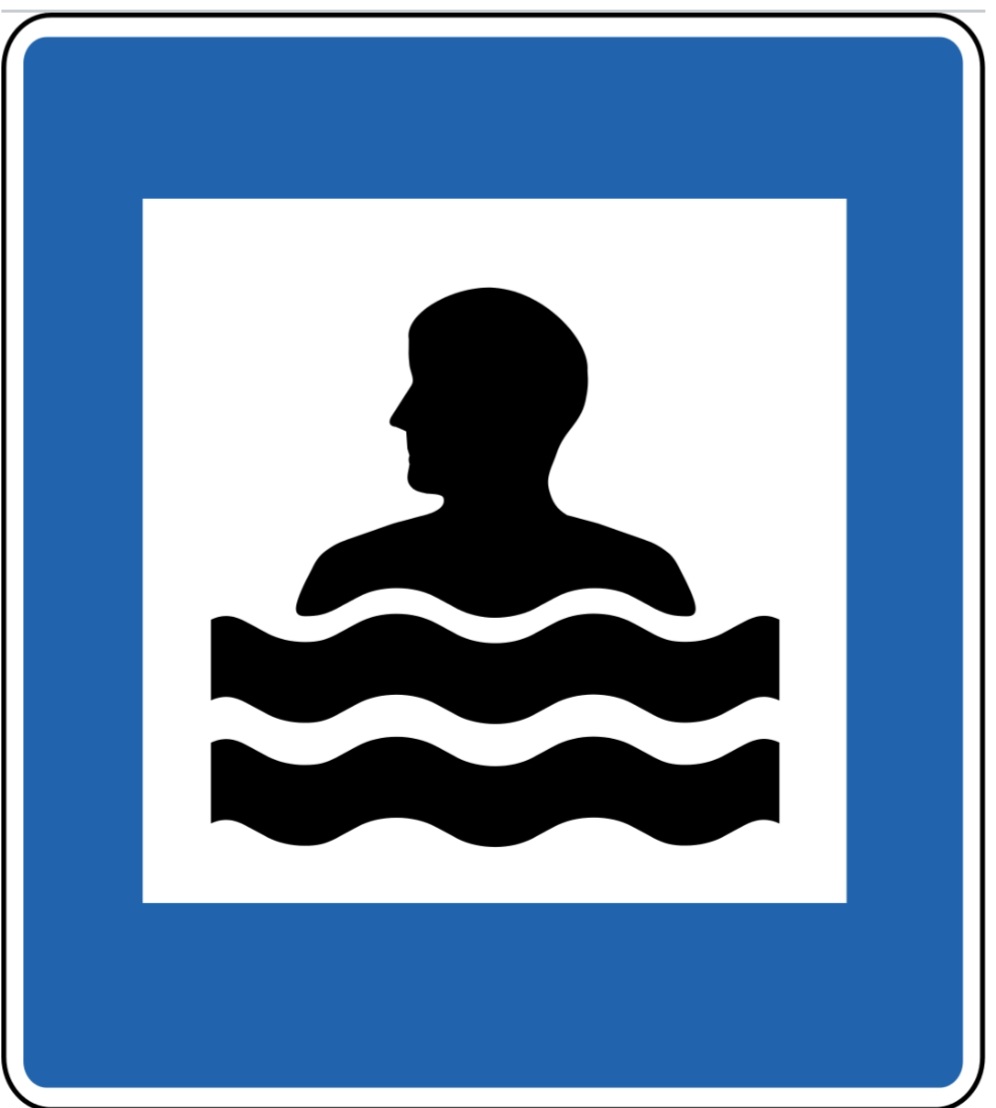
Traveling reveals local cultures and in Iceland I was noticing signs with an outline of a head above some squiggly lines. I knew the majority of Iceland’s energy is geothermal and hot springs are common, but I hadn’t expected even the smallest towns to have bathing facilities with hot tubs and heated swimming pools. (Sometimes cold plunge pools too. But despite hearing how wonderful an icy dip was, I was not tempted).
I was guided by one of those signs in the tiny village of Reykholar on a chilly gray afternoon. The parking lot was nearly empty. The office was attended by a young woman who accepted the admission fee (as I recall, very reasonable) and directed me to an anteroom where I removed my shoes and left them on a shelf. There was a strict protocol to learn and follow. I entered the women’s area where two women, completely unclothed, were taking showers in a communal area chatting casually.
We exchanged hellos and explaining it was my first time there, one kindly pointed to a poster where a figure with its head, underarms, groin, and feet were all highlighted. She explained a thorough washing in those areas was mandatory. After disrobing and diligently adhering to the rules, I put on my bathing suit and ventured outside. The cool air encouraged me to walk briskly and enter the pool. The water warmed me in its embrace.
The women were soon joining a few people already soaking in the hot tub. Swimming apparently had less appeal for the locals. I had the pool to myself and swam back and forth along its length until succumbing to a delicious fatigue. I lingered on my back gazing up at the sky. A cool breeze blew across my face.
I retraced my steps and once again showered, retrieved my clothing, and stepped back into my shoes. I walked back to my car, took in the marsh lands just beyond, and drove to a working cow farm by the coast; my home for several nights.
I’d visit swimming facilities as often as I could. Each had its unique ambiance: some were simple and small, others had multiple pools, saunas, steam baths, and cafes. But the protocol and pleasure I found in each was the same.
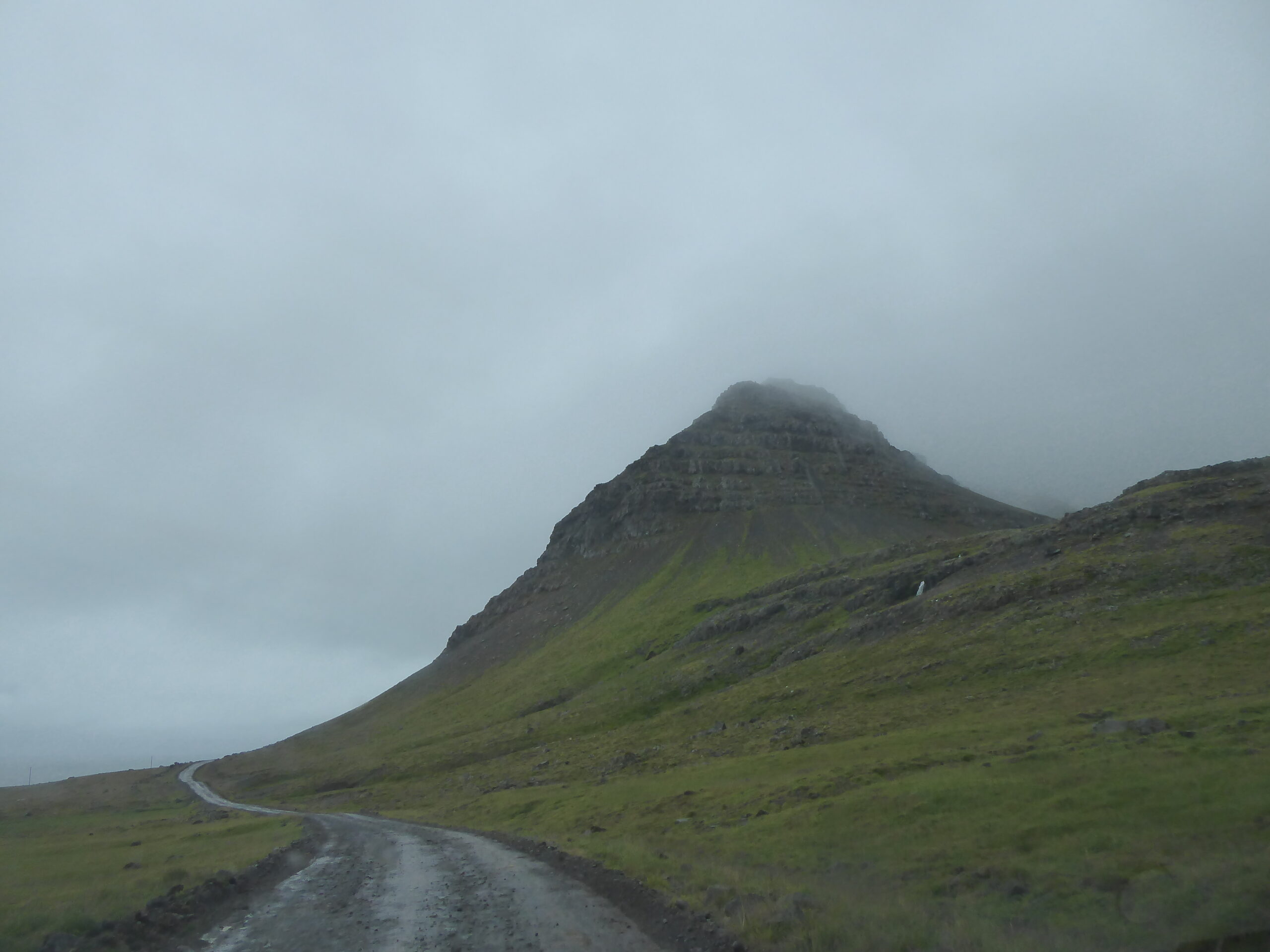
After carefully negotiating yet another winding, narrow coastal road, Rte 619, in the pouring rain, I arrived in remote Selardalur, which consisted of open fields, sheep, a few homes, and the Samuel Jonsson Museum. Jonsson, a self-taught artist, born in 1884 and died in 1969, created sculptures, paintings, a church for an altar that had been rejected by the local congregation’s leadership, and a museum.
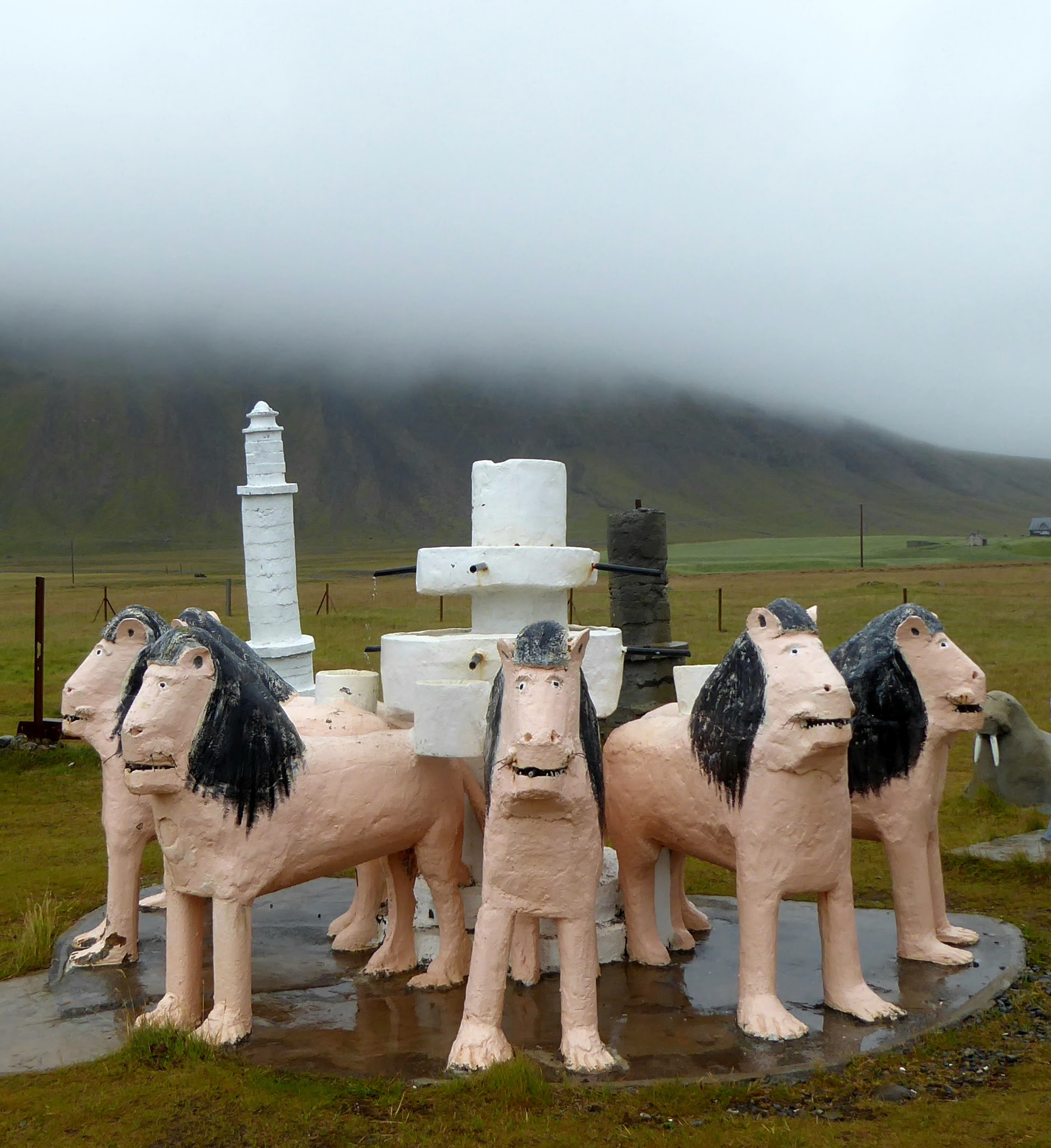
Now open to the public and attended by a charming caretaker, who offers visitors tales and tea, I wandered the grounds. The caretaker explained that Jonsson’s efforts were not appreciated in his lifetime–but I suspect every visitor, like me, leaves grateful he persevered.
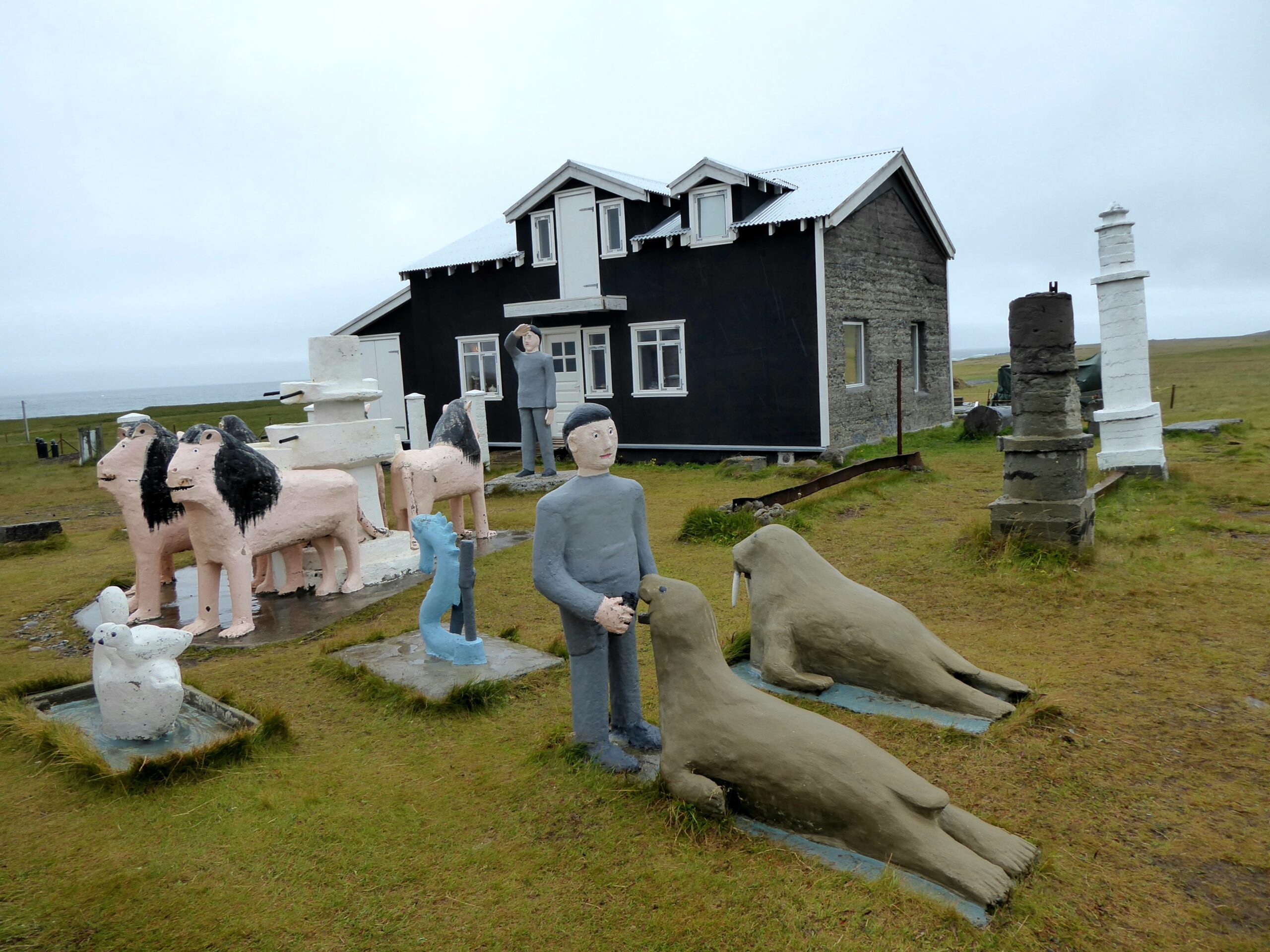
It started pouring again as I reached the car and decided to wait for the weather to clear before tackling the road back. I put the radio on and George Harrison was singing Give me Love (Give me Peace on Earth). I don’t think I’d heard that song in decades, but the car soon filled with our voices.
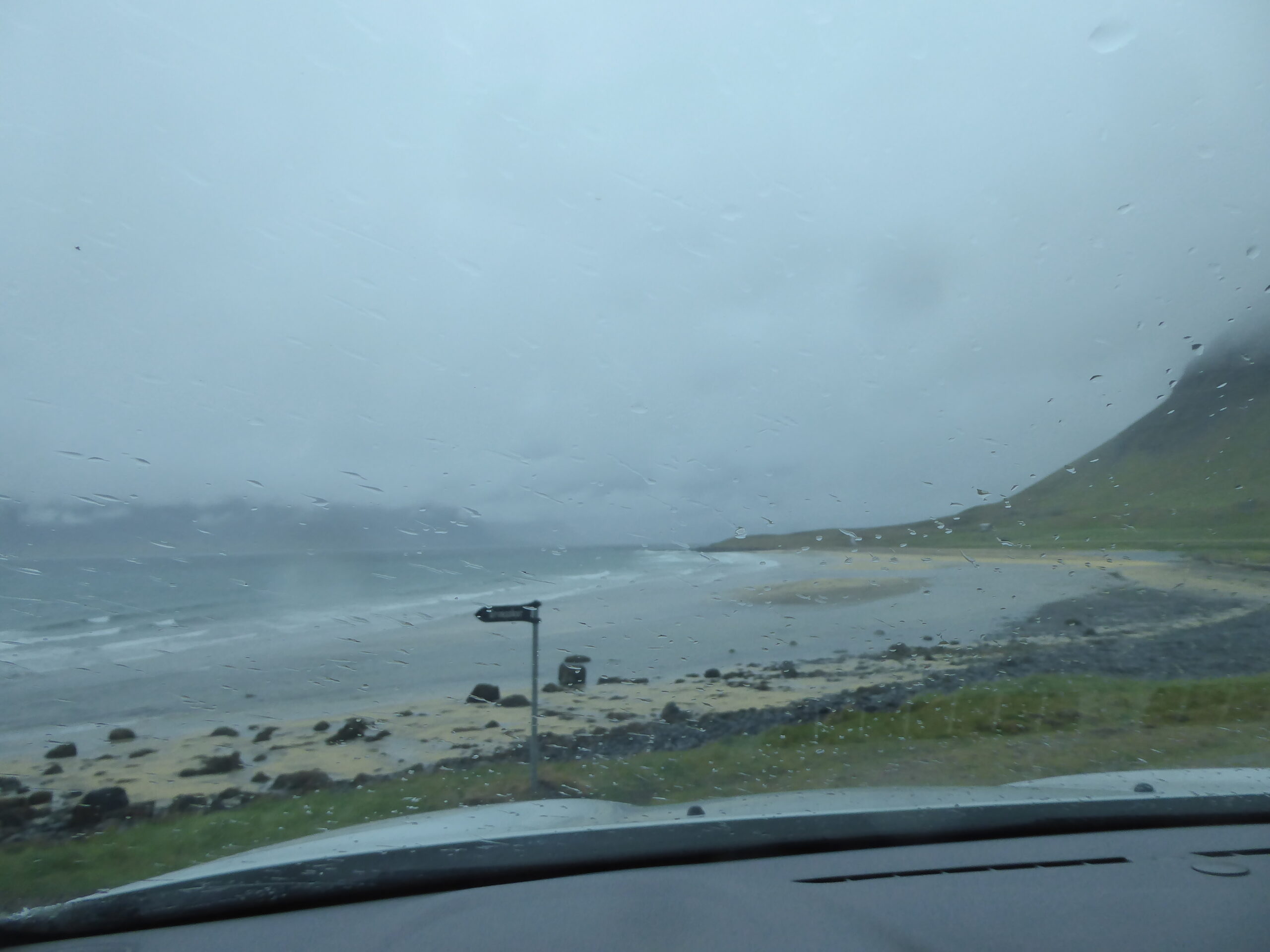
Travel means change and time seems to change too. Days seem to expand to contain the new–a constant. All experiences may not be momentous, but they are often memorable. And even with Iceland’s small population, encounters were frequent. Discovering beauty, both man-made and natural, was ever-present as I continued east along the northern coast.
to be continued…